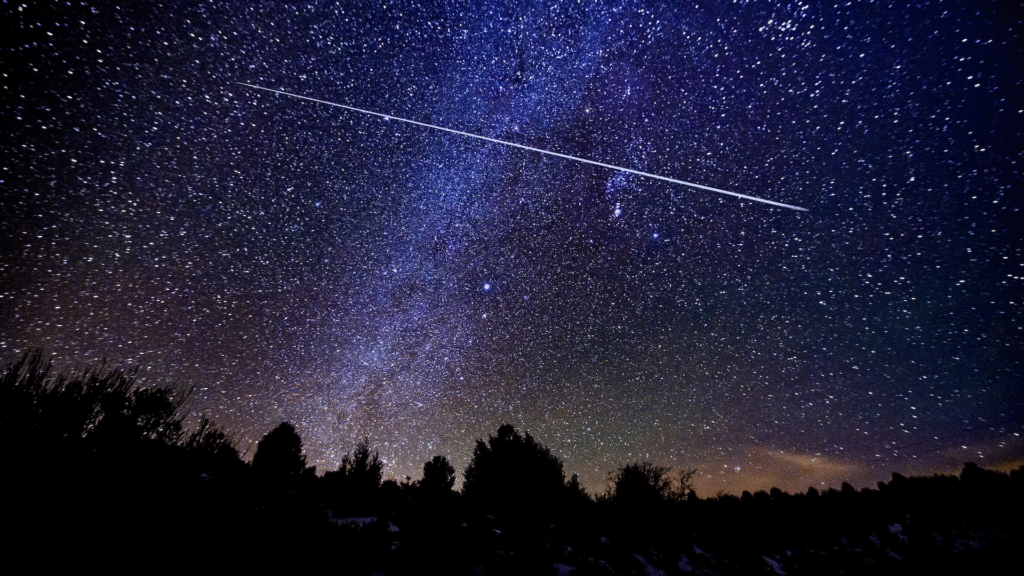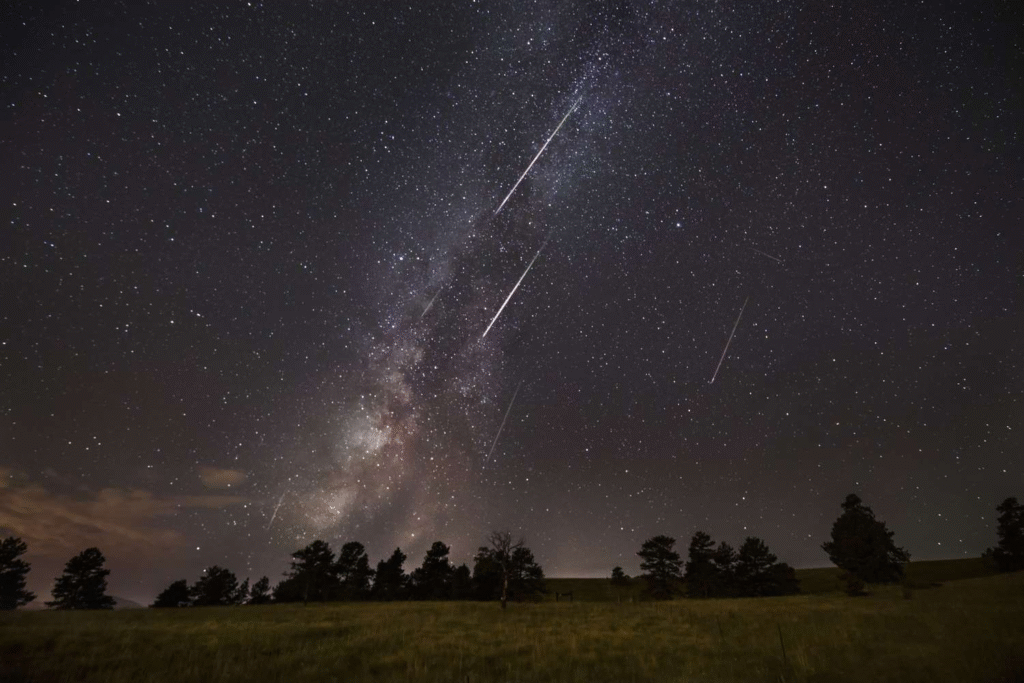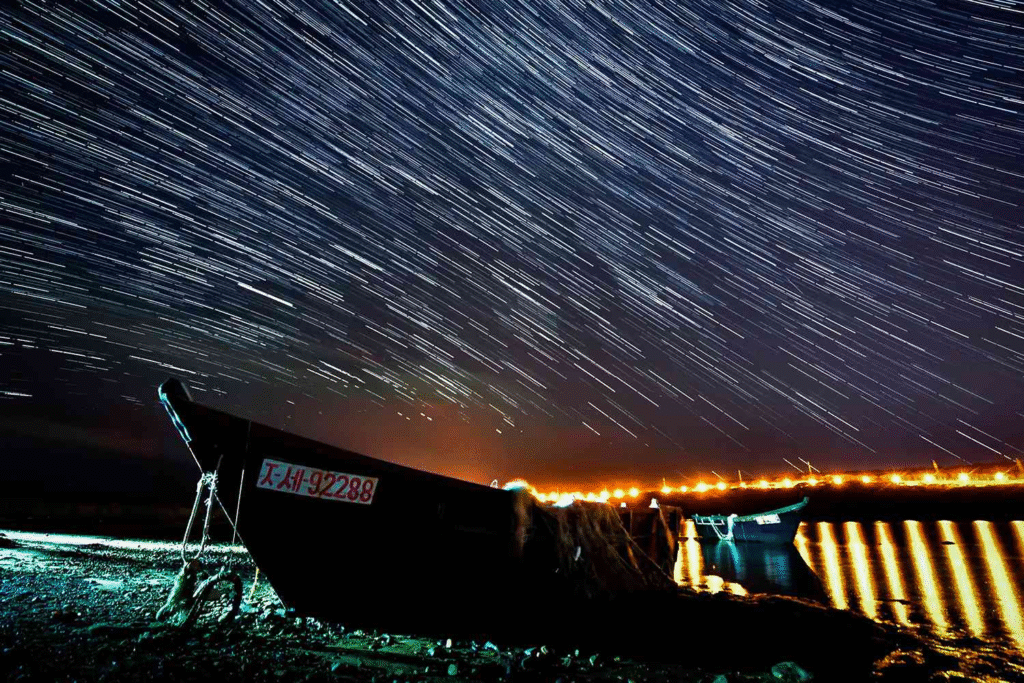Introduction
Every October, stargazers look forward to the hauntingly beautiful Draconid meteor shower (also called the Giacobinids). While often modest, the Draconids are unpredictable — some years they’re quiet, other years they burst with hundreds of meteors per hour. In 2025, conditions may favor a rare outburst. Here’s everything you need to know to catch this celestial show.
What Are the Draconids?

- The Draconids are caused by Earth passing through debris shed by Comet 21P/Giacobini-Zinner. (Space)
- The meteors appear to radiate from the constellation Draco — hence the name “Draconids.” (rmg.co.uk)
- Unlike many meteor showers, Draconids tend to be strongest just after nightfall, not before dawn. (earthsky.org)
- Historically, dramatic outbursts have occurred (1933, 1946, etc.), with very high meteor rates. (Wikipedia)

2025 Forecast: Will There Be an Outburst?
2025 brings an exciting possibility. Several recent studies and models suggest Earth may cross through younger dust trails from the comet, raising the chance of an enhanced outburst:
- A recent modeling paper predicts that Earth will likely encounter trails ejected in 2005 and 2012, producing a stronger than usual display. (arXiv)
- The outburst is expected to be dominated by fainter meteors (so many may be visible only by radar), though a few brighter ones might still be seen. (arXiv)
- Some forecasts suggest a visual rate of 150 to 400 meteors per hour during a short peak period — though many meteors may be faint. (Star Walk)
- However, a bright Moon (waning gibbous or full around Oct 6–7) will reduce visibility of faint meteors. (earthsky.org)
- In short: this could be your last strong Draconid show until 2078, after which orbital shifts may reduce future displays. (Star Walk)

Despite the moonlight, the possibility of even a modest surge in activity makes 2025 one of the more intriguing Draconid seasons in recent memory.
When & Where to Watch (2025)
| Parameter | Details |
|---|---|
| Active Dates | October 6 through October 10 (In-The-Sky.org) |
| Peak Time | Around 19:00 UTC on October 8 (earthsky.org) |
| Best Viewing Window | After nightfall (evening to midnight) (earthsky.org) |
| Estimated Rates (Visual) | Under ideal dark skies, ~10 meteors/hour; during an outburst possibly up to 150–400/h (though many will be faint). (The Guardian) |
| Moonlight Interference | A bright Moon on Oct 6–7 will wash out many fainter meteors. (amsmeteors.org) |
| Best Locations | Northern Hemisphere, away from city lights, with a wide, unobstructed northern sky view. (rmg.co.uk) |
Viewing Tips
- Go early — begin watching soon after dark rather than waiting until late at night.
- Dark sky matters — avoid light pollution to catch fainter meteors.
- Block the Moon — use a building or tree to shield your eyes from moonlight.
- Eyes adapt — let your eyes adjust (~20–30 minutes) to darkness.
- Don’t use binoculars or telescope — meteors streak across wide regions; just look with naked eyes.
- Watch toward mid to high sky, not directly at the radiant — meteors away from the radiant have longer tails.

Why 2025 Is Special & What Makes It Unique
- Younger Trails, Stronger Outburst: The Earth is predicted to intercept young dust trails from 2005 and 2012, which tend to produce denser meteor activity. (arXiv)
- Radar-Focused Activity: Many of the meteors may be faint (below naked-eye visibility), making radar observations extremely valuable for studying the event. (arXiv)
- Potential Last Big Show for Decades: Because of gravitational perturbations (especially by Jupiter), the Draconids’ orbit may shift in coming years, making strong displays rarer until ~2078. (Star Walk)
- Timing & Comparison: October 2025 is packed with celestial activity — a supermoon occurs on October 6, and the Orionid meteor shower will follow later in the month. (NASA Science)
Sample Conclusion & Call to Action
Don’t miss this unique opportunity to witness the Draconid meteor shower 2025. Whether it’s a gentle trickle or a dramatic outburst, stepping outside on October 8 soon after darkness falls gives you your best shot. If you get photos or see meteors yourself, share them — we’d love to publish your captures on our site. Stay tuned for a post-event gallery and analysis next week.



